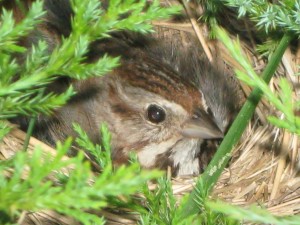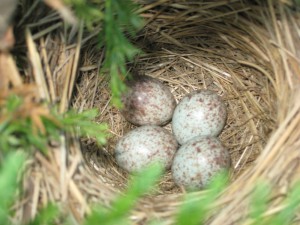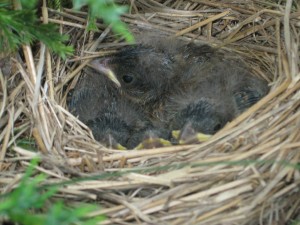Conservation (from home)
“From home” is a cherished local expression, informally used to keep track of kinship relationships, as, Joann, Clifftop’s Membership Chair, notes of herself, “I was a Schulden (from home); of course, my mother was a Pflasterer (from home).” For Clifftop, conservation (from home) is a reminder of the natural legacy handed to us that we hope to pass forward for generations to come.
Nature can be surprisingly close at hand: your own yard and right at home with you. Hummingbirds sipping nectar from petunias in an apartment’s planter, butterflies wafting down the city streets, raccoons slinking behind the garage, foxes making dens in town, bald eagles lofting on thermals over the highway.
Wildlife habitat preservation also is surprisingly close at hand and is something each of us can take a hand in. Sustaining wildlife means making sure habitat – food and shelter — is available. Our yards can be wildlife deserts or can be hospitable refuges. It all starts with native plants.
Start with natives, end with wildlife. To help you garden with nature, we’ve prepared a listing of native plants that includes a brief description and suggestions on sun, shade and moisture needs. Download our garden of natives here. You can find and grow native plants of unsurpassed beauty for every garden situation:Growing with Natives II
Native plants underlie, form the basics of life, and sustain the wildlife around us by serving as the foodstuff for insect herbivores that themselves then become food for wildlife. We enjoy the beauty of a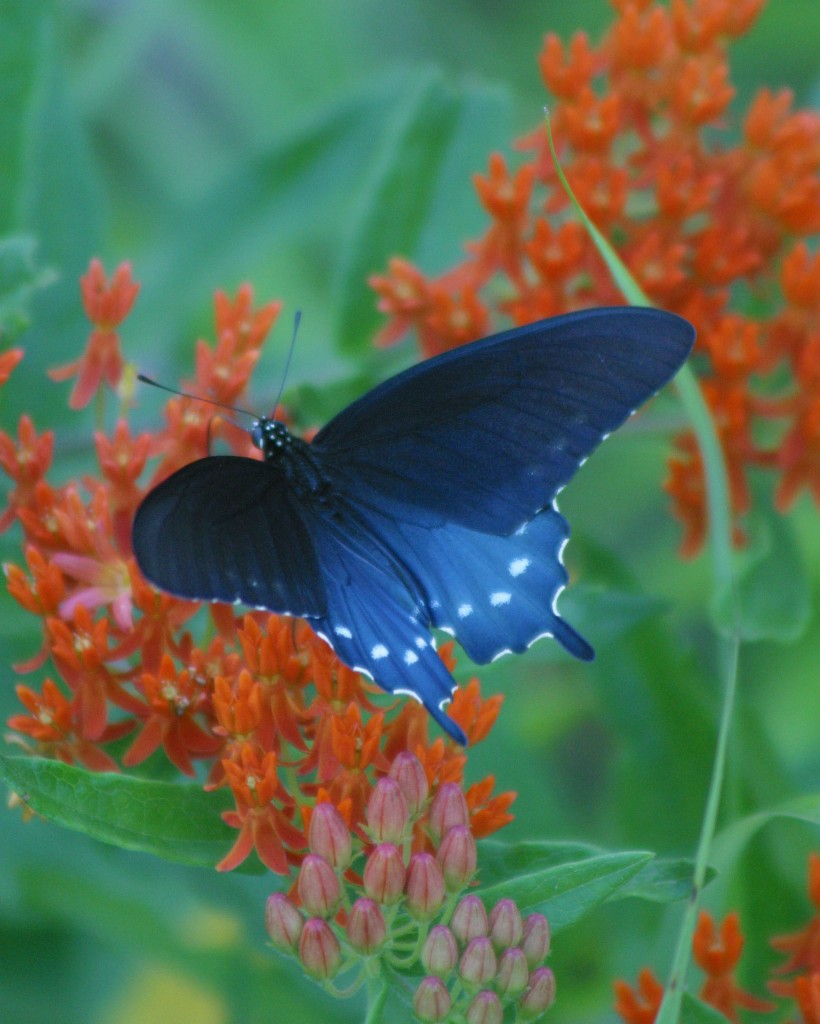 Pipevine Swallowtail butterfly. But the butterfly only came into its gorgeous adult form by feeding on native plants in the genus Aristolochia. In our area two species of this genus are native, Virginia snakeroot (Aristolochia serpentaria) and Dutchman’s pipe-vine (Aristolochia tomentosa).
Pipevine Swallowtail butterfly. But the butterfly only came into its gorgeous adult form by feeding on native plants in the genus Aristolochia. In our area two species of this genus are native, Virginia snakeroot (Aristolochia serpentaria) and Dutchman’s pipe-vine (Aristolochia tomentosa).
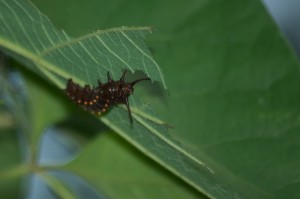 The adult butterflies take nourishment and nectar from a wide variety of flowers — native or non-native — and show no particular preference. The caterpillars (the larval form of the butterfly) simply starve to death if they cannot feed on Aristolochia plants.
The adult butterflies take nourishment and nectar from a wide variety of flowers — native or non-native — and show no particular preference. The caterpillars (the larval form of the butterfly) simply starve to death if they cannot feed on Aristolochia plants.
Want more butterflies in your garden? Grow some larval host plants and celebrate chewed leaves!
Your celebration of chewed leaves — no pesticides please — benefits additional wildlife. Insect herbivores, the caterpillars, eggs, worms, snails, slugs, bugs — for short — that consume plants are part of a food chain that extends upwards and downwards. Insects are important pollinators moving pollen from flower to flower as they feed, just like the adult Pipevine Swallowtail. Just as crucially, insects herbivores are FOOD for lots of additional wildlife.
Birds depend on insect foods. Nearly 100% of terrestrial birds feed their young insects. Insect herbivores are the primary food of baby birds — even hummingbirds.
The Song Sparrow parents will feed their nestlings insects. Without insect foods, the nestlings die.
To read a bit more about nature at home, please click on the links to these CLIFFnotes: Native Plants at the Heart of Life and Bird Feeding Stations.
Want to do more conservation (from home)?
Tell your friends and neighbors about the wildlife you’re growing in your gardens and how you are creating habitats and homes for nature. We invite you to share your observations, photos and ideas, with Clifftop readers.
Learn more about gardening and gardening with natives through the University of Illinois Extension Service programs — take classes to become a Master Gardener or Master Naturalist.
Tackle the invasive plants that are growing in or near your yard and allow the native plant populations to recover. Check our complete section on invasive plants and methods of control.
Join Clifftop and your friends and neighbors during workdays for invasive plant removal in our area’s premier natural spots ~~ become a guardian and caretaker of our precious natural heritage.
Join Clifftop for the seminar series “Meet the Neighbors” to meet and learn about the wildlife that shares our lands. Join Clifftop and hike with us to explore, learn about, and enjoy the beauty of White Rock and the lands we help steward.
Conservation (from home) is at home in our bluff lands.

